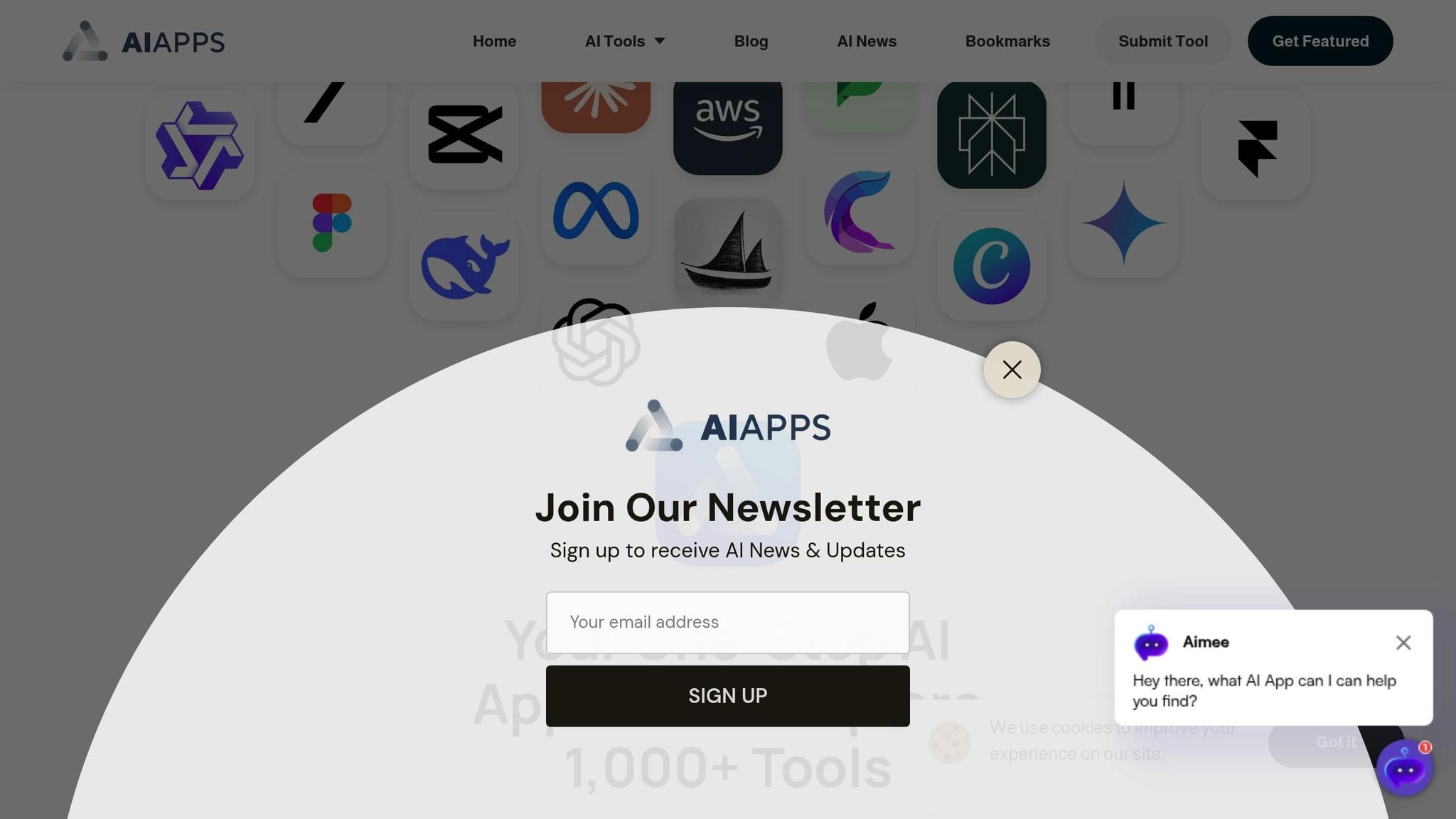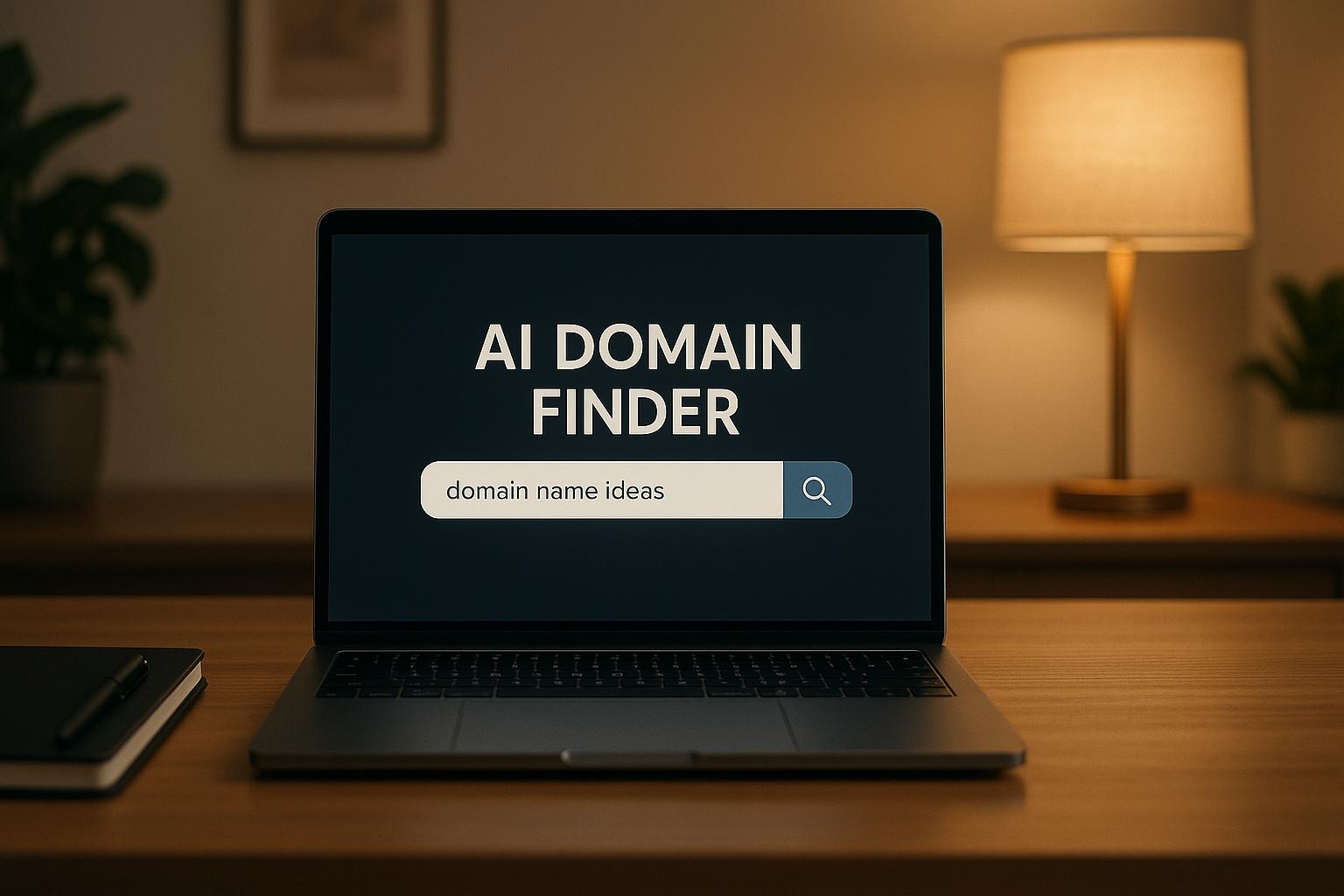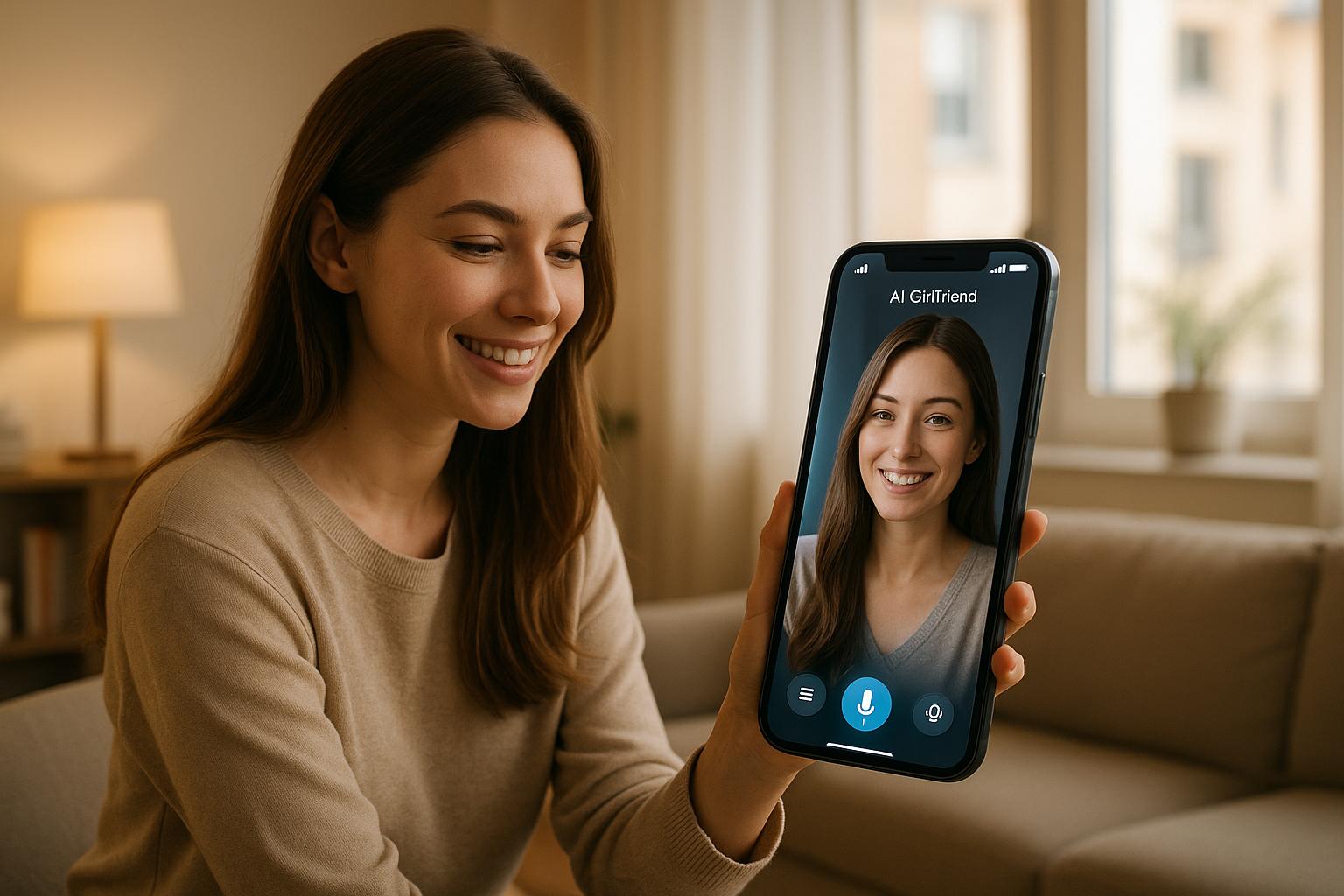AI is transforming animation, making it faster, more accessible, and efficient. In 2025, creators can now produce high-quality animations in less time, thanks to tools that automate tasks like frame generation, lip-syncing, and character rigging. This shift benefits independent creators, small studios, and large teams alike. Key advancements include:
- Text-to-Animation Tools: Convert written descriptions into animations, simplifying workflows.
- AI Frame Generation: Tools like Autodesk's MotionMaker and Cascadeur's upgrades reduce production time by up to 70%.
- Real-Time Collaboration: Cloud-based platforms enable global teamwork and faster rendering.
- AI Character Animation: Create lifelike movements and expressions with minimal manual input.
- Music-Synced Animation: AI matches visuals to music for immersive experiences.
This year marks a turning point as AI tools become more efficient and accessible, reshaping how animation is created while allowing animators to focus on storytelling and design.
Top 10 AI Animation Tools You Must Try in 2025! (Free & Paid) 😎
Major AI Animation Technology Advances in 2025
The animation industry has undergone a massive transformation in 2025, with AI taking over many tasks that once required manual effort. These advancements are not just incremental; they’re reshaping the way animators approach their work, allowing them to shift their focus from repetitive technical tasks to the creative aspects of storytelling and design.
Automated Frame Generation
One of the standout developments this year is the use of AI for frame interpolation. Essentially, AI systems now handle the creation of intermediate frames between keyframes, eliminating the need for animators to painstakingly draw each frame by hand. This has dramatically sped up production timelines while maintaining high-quality results.
In June 2025, Autodesk introduced MotionMaker, an AI-powered tool for Maya that uses machine learning to generate in-between frames for both bipedal and quadrupedal creatures. It even comes with a "body control" interface, enabling artists to fine-tune direction and movement. Studios have reported that this tool alone reduces animation time by 60–70% - a game-changer for projects with tight deadlines.
Similarly, Cascadeur's v2025.2 upgrade has taken things further with enhanced AI-driven inbetweening. Features like a "kind-of-motion" selector and better handling of tangents and transitions allow the system to generate up to 120 improved frames. These tools not only save time but also improve the overall fluidity and realism of animations.
The financial impact of these advancements is equally striking. Independent animation studios have reported cutting production timelines by an average of 30% and reducing costs by 25%, thanks to automated frame generation and related AI tools like texture generation and character rigging.
AI Character Animation
AI is also revolutionizing character animation by analyzing reference footage to create realistic movements with minimal input. These tools can detect and replicate facial expressions, trace natural body movements, and produce believable character behaviors that would have previously required hours of manual keyframing.
Modern AI tools blend motion capture data with keyframing techniques, allowing animators to work more intuitively. For instance, animators can sketch out rough keyframes, and the AI fills in the gaps with contextually appropriate movements. This ensures consistency in character behavior while still giving animators the freedom to express their creative vision.
AI character animation shines in complex scenarios, such as crowd scenes. Instead of animating each background character individually, AI generates varied and realistic movements for them, ensuring they blend seamlessly into the scene without drawing attention away from the main action.
Text-to-Video and Real-Time VR Animation
Text-to-video technology has emerged as another groundbreaking tool in 2025, enabling creators to turn written descriptions into animations. This innovation lowers technical barriers, making it easier for creators to prototype ideas quickly.
Runway ML, for example, expanded its animation capabilities this year. Its tools allow animators to input start and end frames, and the "Frame Interpolation" feature generates smooth animated sequences from a series of images.
Meanwhile, Gooey.ai has introduced an animation generator powered by stable diffusion. Users can add prompts at different keyframes to ensure smooth transitions, and advanced settings let them adjust camera movements like zoom, pan, roll, and tilt. This level of control gives creators more precision over their animated sequences.
Real-time VR animation is also gaining traction, allowing animators to work directly in 3D space. This approach provides immediate feedback, making it easier to pose characters and compose scenes, especially for intricate 3D animations where spatial relationships are critical.
These advancements are democratizing animation by making high-quality tools accessible to more creators. At the same time, experienced animators can dedicate their energy to crafting compelling stories, developing characters, and pushing artistic boundaries. AI is no longer just a tool - it’s a collaborator in the creative process.
Leading AI Animation Tools in 2025
The world of AI animation in 2025 is changing at an incredible pace. Tools that once seemed futuristic are now simplifying complex processes and making top-tier animation more accessible than ever. By the close of 2024, a striking 78% of animation studios had adopted AI tools - a figure that only continues to grow in 2025. These advancements are reshaping how creators approach animation, streamlining workflows and opening doors to new possibilities.
Popular Animation Tools
AI animation platforms are revolutionizing how animations are created. Tasks that once demanded hours of manual effort are now automated, thanks to these tools. Using generative AI, these platforms can build entire scenes, characters, and animations from minimal input - like a simple text prompt or a basic image. They handle everything from frame generation and character rigging to scene rendering, reducing the need for deep technical expertise. This means creators can focus on storytelling and creativity while producing professional-grade content with fewer resources.
How AI Apps Helps Find Animation Tools

With so many tools available, finding the right one can feel overwhelming. That’s where platforms like AI Apps come in. AI Apps offers a curated directory featuring over 1,000 AI tools, neatly categorized into areas like text-to-video generation, character animation, and motion graphics. Users can filter tools based on pricing and features, making it easier to pinpoint the perfect match. The platform also verifies tools through a thorough multi-step process to ensure quality. For studios juggling multiple options, AI Apps provides side-by-side comparisons to simplify decision-making. On top of that, its blog keeps creators up-to-date with the latest animation trends and tool updates, helping them stay ahead in this fast-moving industry.
sbb-itb-212c9ea
Current Trends and Applications in AI Animation
As we move through 2025, AI animation continues to reshape creative industries by opening new doors and simplifying production workflows. Let's dive into three key trends that are pushing the boundaries of what's possible in animation.
More Realistic Animation
AI tools have reached a point where they can produce incredibly lifelike facial expressions and gestures. Subtle nuances, like a fleeting smile or a raised eyebrow, can now be simulated with precision. This leap forward enhances visual storytelling, making it more immersive for industries like gaming, education, and even healthcare. On top of that, these advancements simplify the animation process, making top-tier visuals more achievable for creators with varying resources.
Music-Driven Animation
Imagine visuals that move in perfect harmony with music - AI makes this a reality. By analyzing elements like rhythm, tempo, and mood, AI-powered tools can create animations that sync dynamically with audio in real time. This technology is a game-changer for musicians and content creators, enabling them to craft captivating live performances and video content. The result? Eye-catching experiences that thrive on streaming platforms and social media.
Automated Multilingual Animation
AI is also transforming how animated content reaches global audiences. Tools now allow content to be adapted seamlessly for different languages by adjusting visuals and syncing dialogue. This makes it easier than ever to update marketing campaigns, educational materials, and training videos for international markets, breaking language barriers with efficiency and precision.
Ethics and Creative Impact of AI Animation
The rapid evolution of AI animation technology is opening up a world of opportunities, but it also brings a fair share of challenges. As these tools grow more advanced, questions about creativity, originality, and the role of human artistry are becoming more pressing.
Merging Automation with Human Creativity
AI animation tools shine when they complement human creativity rather than overshadow it. The most forward-thinking studios and creators are using AI as a collaborative partner, automating tedious tasks so that animators can focus on storytelling, artistic vision, and adding emotional depth.
For example, animators are leveraging AI to handle repetitive tasks like generating base movements, maintaining consistent expressions, or creating detailed backgrounds. This allows them to dedicate more time to crafting compelling narratives and fine-tuning emotional nuances. While AI takes care of the heavy lifting - such as frame generation and basic motion - human creators remain at the helm, steering the project’s creative direction and refining its artistic elements.
Many animation studios are now rethinking their workflows to integrate AI strategically. Instead of replacing entire teams, they’re using AI to streamline specific production stages. By automating routine tasks, studios - especially smaller ones - can produce high-quality content on tighter budgets and timelines. This democratizes access to professional-grade animation, a feat once limited to larger operations with extensive resources.
That said, while AI can produce technically polished animations, it still falls short in areas like context, cultural sensitivity, and the creative problem-solving that makes storytelling truly impactful. Human animators bring an indispensable ability to connect with audiences, navigate cultural subtleties, and make artistic decisions that serve the story’s deeper purpose.
As studios adopt AI to enhance their creative processes, ensuring the authenticity of their content becomes a critical concern.
Ensuring Content Authenticity and Transparency
The speed and efficiency of AI in creating convincing animations come with a significant challenge: maintaining authenticity. This is particularly important when animations portray real people or are used in educational or news settings, where accuracy and transparency are paramount.
To address these concerns, many studios are adopting metadata standards like C2PA, which embed creation details directly into the content. Industry guidelines also call for clear labeling of AI-generated material, ensuring viewers and platforms can easily identify which parts of an animation were created by AI and which involved human input. This transparency builds trust and helps audiences understand the creative process behind the content.
Beyond technical measures, the industry is taking on a broader responsibility to establish ethical practices for AI use. Animation professionals are documenting AI’s role in their projects and communicating openly with clients about the extent of AI involvement. By doing so, they maintain trust while reaping the benefits of AI’s capabilities.
Educational institutions are also stepping up by incorporating AI ethics into their animation programs. Future animators are not only learning to use AI tools effectively but also gaining the skills to make thoughtful decisions about when and how to use them responsibly in their creative work. This ensures that the next generation of animators is prepared to navigate the ethical complexities of an AI-driven industry.
The Future of AI Animation
The animation industry is entering an exciting phase where AI is fundamentally transforming how content is created. These advancements are not just fleeting trends - they're shaping the very foundation of production processes.
One of the most striking developments is the rapid growth of text-to-video technology. What used to take months can now be achieved in mere hours, allowing creators to turn written scripts into animated sequences with unprecedented speed. This evolution is leveling the playing field, enabling independent creators and smaller studios to produce high-quality, visually compelling content that rivals the output of larger production houses. In turn, this opens doors to new audiences and markets that were once out of reach due to cost and resource limitations.
But it’s not just about technology. The industry is undergoing a shift in how automation and human creativity coexist. AI is increasingly taking over repetitive, time-consuming tasks, freeing animators to focus on what they do best - crafting stories with emotional depth and unique artistic vision. This balance ensures that while AI drives efficiency, the heart of storytelling remains firmly in human hands. At the same time, there's a growing emphasis on content authenticity and transparency, with new standards emerging to label and verify AI-generated work.
As these tools become more advanced, selecting the right ones is becoming a challenge. Platforms like AI Apps are stepping in to simplify this process. AI Apps offers a curated directory featuring over 1,000 AI tools across categories like video editing and animation. With robust filtering options, creators can easily find tools tailored to their needs, budget, and technical expertise.
The future of AI animation isn’t about choosing between human ingenuity and artificial intelligence - it’s about blending the two into a seamless partnership. Together, they’re pushing the boundaries of visual storytelling, paving the way for animated content that we can barely imagine today.
FAQs
How do AI animation tools improve the speed and quality of animation production?
AI animation tools such as MotionMaker and Cascadeur are changing the game in animation production by streamlining tedious tasks and boosting productivity. MotionMaker speeds up character animation without sacrificing creative control, enabling animators to devote more energy to storytelling and design. Meanwhile, Cascadeur offers AI-assisted keyframe animation, including features like AI Inbetweening, which generates seamless transitions between poses, cutting down on time and effort.
By automating repetitive tasks, these tools free up animators to focus on the artistic side of their work, resulting in quicker production timelines and polished, high-quality animations.
What ethical challenges come with using AI in animation?
AI's role in animation brings up some tricky ethical issues. A big one is intellectual property disputes - like figuring out who owns the rights when AI replicates an artist's style or produces something entirely new. There's also the matter of data consent, since AI often learns from massive datasets that might include copyrighted or unauthorized material.
Another concern is job displacement, as AI could potentially replace human animators in certain tasks. On top of that, there's the challenge of deciding how to divide creative credit between AI tools and the people using them. And let’s not forget the risks of misuse - AI could be exploited to create misleading or harmful content. All of this underscores the need to handle these technologies with care and responsibility.
How can small creators and studios use AI animation tools to compete with big production companies?
Small creators and studios now have access to AI animation tools that make producing high-quality content faster and more affordable than ever. These tools are helping to level the playing field, allowing smaller teams to compete with larger companies. With features like automating repetitive tasks, streamlining workflows, and even transforming 2D videos into 3D animations, creators can achieve impressive results without needing advanced technical skills.
Many of these tools are designed to be cost-effective and easy to use, making professional-grade animation achievable on a limited budget. This allows smaller teams to focus their energy on creativity and storytelling while keeping expenses in check. By embracing these advancements, they can stay competitive in the ever-evolving animation industry.



